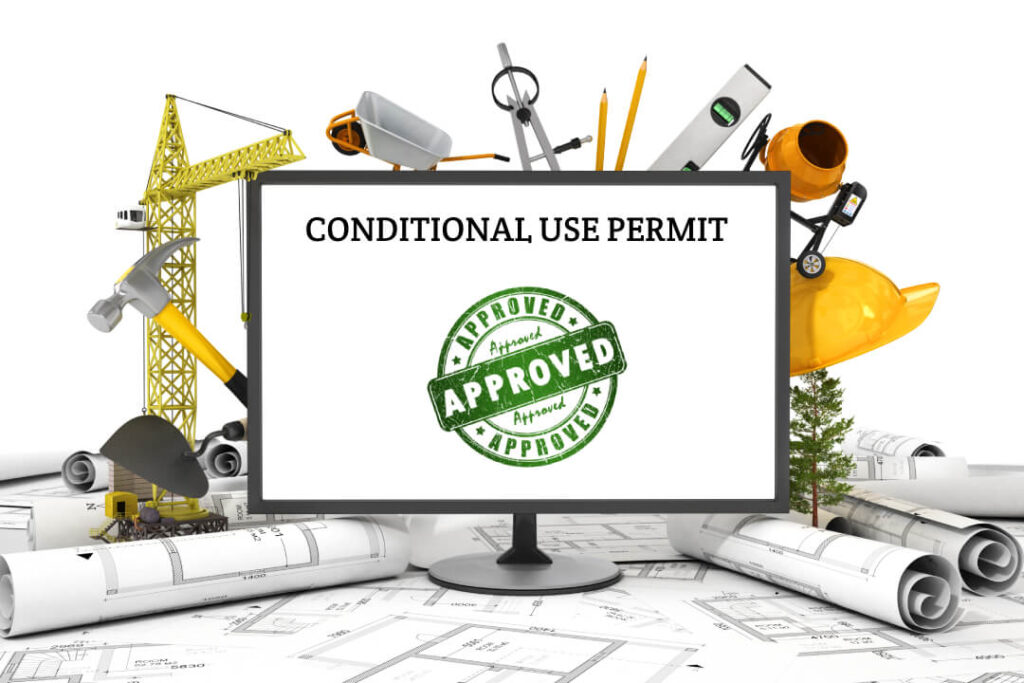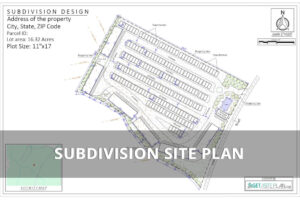
3D Site Plans – Complete Rendering Guide
Before a single foundation is poured or a wall takes shape, every construction project begins with one thing – a plan. But while traditional blueprints show dimensions, 3D site plans


Contributing Writer | Architecture & Design Writer
Do you have a specific purpose for your land, but find that it’s not zoned for it? You have two options:
Obtaining a conditional use permit can take time, so it’s important to plan ahead. The process of obtaining a CUP can vary by city, but there are commonalities.
If you are considering applying for a conditional use permit, it is important to know what it is and how to apply for it. So, let’s find out.
Table of Contents
Toggle
A conditional use permit (CUP) is an exception to zoning regulations that allow you to use your property in nonconforming ways. It can serve as an alternative to rezoning and allow you to use your land in unique ways where rezoning is not possible.
CUP can be defined as a contract between the local government and the landowner. The government gives permission to the landowner to conduct operations not normally permitted by zoning rules. In return, the owner must comply with certain conditions, hence the name conditional use permit.
CUP and zoning cannot be separated, because the permit itself relies on the zoning laws. Let’s explain.
Permitted conditional use permits are specifically listed for each district in the zoning ordinance. The reason for that is to prevent negative impact on the surrounding properties and the community.

Conditional use permit in real estate refers to permissions granted to developers. CUP can be granted by the local planning board or committee to allow the developer to use the property for a purpose not normally permitted in that specific zone.
An example would be to allow the construction of a private school in a residential area. This permit usually includes certain conditions to minimize any negative impact on existing homes or businesses in the area.
In order to obtain a commercial real estate loan to buy, restore or build a commercial property, lenders will need to ensure that the borrower’s plans for the property comply with applicable zoning ordinances. If not, the lender will require proof that the problem has already been resolved through a conditional use permit, variance or rezoning.
But what is the difference between CUP, variance and rezoning? Let’s find out.

A variance is a limited waiver or modification of zoning rules. Variance is applied in situations where following the zoning code will lead to unnecessary hardship for the landowner.
There are two types of variance:
A use variance is used in rare circumstances and many jurisdictions do not allow it. They believe that the proper way to handle that situation is a conditional use permit. The reason is that a use variance gives the landowner permission to use the land for the means that are prohibited by the zoning codes. Which is pretty much the same as the conditional use permit.
An area variance is a bit different. The main purpose of it is to give the same treatment to everyone in the neighborhood.
For example, everyone in the community has a similar sized house and there is one person that has an oddly shaped parcel. Because of the setbacks (minimal distance between a structure and the fence, road, street) they are not allowed to build the same house as everyone else. If they apply for an area variance, setbacks will be changed for them, so they can build the same home as everyone else.
You can see that this case is much different than the example we gave for conditional use permit. But are there any differences between CUP and a special use permit? Let’s find out.
Special use permit is also called a special land use permit or special exception. The only difference between CUP and special use permit is the board that administers the approval.
Usually the planning board (planning commission) is the one that administers the conditional use permit. They are also in charge of reviewing site plans, so the process is often combined.
Special use permit is administered by the zoning board of adjustments. So the process of obtaining it takes longer, since that board isn’t in charge or reviewing site plans.
Rezoning is an act of reclassifying the use of the land, property or an entire district. With it the previously assigned zoning will change to a new one. This usually happens when an area was zoned, for example, for agricultural uses, but the nearby city expanded, so now the use of the land can be rezoned for commercial use.
This is very different from a conditional use permit, because CUP is for exceptions to the zoning rules. While rezoning is a complete change of the land use according to the zoning codes.
Now that we understand the difference between CUP, variance and rezoning, let’s take a look at the process of obtaining a conditional use permit.
The planning commission approves the conditional use permit. We will state at the beginning that the decision of the planning commission is subject to appeal. The process of obtaining a conditional use permit goes as follows:
Now that you are familiar with the process of obtaining a CUP, let’s see what the requirements are.
Keep in mind that the requirements for obtaining a CUP may vary depending on where you live. But the most common ones are:

Let’s look at some examples of conditional use permits, just to give you a better understanding of the application forms for it.
Here are some examples of conditional use permits in different cities:
The cost of a conditional use permit varies depending on the area where you live. The average range is between $1500 and $5000.
Usually CUPs do not expire. But there are some instances when they do, those are:
– If the permit isn’t used within one year of obtaining it
– If the permit has a specified expiration date
Our advice is to file an application for a new CUP at least six months prior to the expiration date.
Generally, a CUP application process takes between 10 and 12 months.
Yes, conditional use permits can be revoked. If the circumstances when the permit was granted significantly changed, or if there is some evidence of violation of the zoning codes, CUP can be revoked. The planning commission will have to vote on it and there has to be a majority of more than four-fifths of its members.
No, you can’t, that is considered to be a violation of zoning ordinance and you will be fined.
As you have seen, the process of obtaining a conditional use permit is not the easiest, but it does not have to be difficult either. Leave it to our team of experts to create a site plan for permits, custom floor plan and the elevation plan drawing. With these plans professionally made, you have nothing to worry about.
If you have any questions, please feel free to contact us.
Learn more about our contributor:

Contributing Writer | Architecture & Design Writer
During my career, I’ve written articles on interior design, home remodeling, and renovation with an emphasis on money-saving tips and DIY ideas. It’s been a rewarding journey and I am thrilled to continue helping others bring their architectural visions to life.

Before a single foundation is poured or a wall takes shape, every construction project begins with one thing – a plan. But while traditional blueprints show dimensions, 3D site plans

Many homeowners start landscaping projects without realizing some require permits. A landscape permit helps ensure compliance with local codes, protects the environment, and prevents drainage or structural problems. Whether you

Picture standing over a blueprint that shows the future of your land – where roads will curve, how each lot will breathe, where every pipe, fence, and tree will fit.